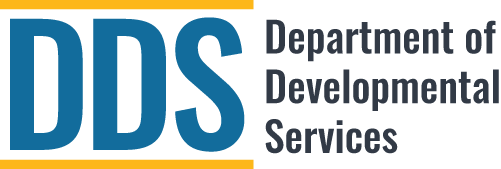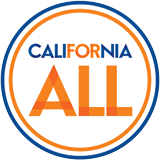The 21st Century Cures Act, signed into law in 2016, requires that States set up an electronic system to verify Medicaid-funded personal care and home health care services requiring an in-home visit by a provider. For more detailed information about EVV, please see the EVV FAQs in English or Spanish or review the “About” section below.
Office Hours
Upcoming Virtual Office Hours
July 1st, 2024, from 2:00pm – 3:00pm
TOPIC: CalEVV Onboarding and Updates
Register for Webex Meeting Here
July 11, 2024, from 10:00am – 11:00am
TOPIC: CalEVV Onboarding and Updates
Register for Webex Meeting Here
July 19, 2024, from 3:00pm – 4:00pm
TOPIC: CalEVV Onboarding and Updates
Register for Webex Meeting Here
Upcoming In-Person Office Hours
In-Person Office hours are open to caregivers, providers and regional center staff. A valid photo ID is (required) to attend. No registration required and office hours are open from 3:00 p.m. – 5:00 p.m. PST at the dates and locations noted below.
| Dates | Location |
|---|---|
| July 23 & 24 | 520 East Montecito Street, Santa Barbara, CA 93103 |
| July 31 & August 1 | 1900 Churn Creek Road, Suite 114, Redding, CA 96002 |
| August 6 & 7 | 525 2nd Street, Suite 300, Eureka, CA 95501 (Free and paid parking lots in and around Old Town Eureka) |
| August 13 & 14 | 495 Tesconi Circle, Santa Rosa, CA 95401 |
| August 27 & 28 | 6201 San Ignacio Ave, San Jose, CA 95119 |
| September 11 & 12 | 2500 S. Western Ave., 4th Floor, Los Angeles, CA 90018 |
Stakeholder Information
Upcoming Stakeholder Meetings:
The Department of Developmental Services (DDS) held frequent stakeholder webinars throughout the implementation of the federal Electronic Visit Verification (EVV) requirement. Information about upcoming DDS stakeholder meetings will be posted when available.
If you want to be added to the DDS stakeholder notification list, please send your request to DDS Electronic Visit Verification at: EVV@dds.ca.gov
Previous Stakeholder Meetings:
Meeting Archive
- November 29, 2022 – DDS Hosted
- October 25, 2022 – DDS Hosted
- September 27, 2022 – DDS Hosted
- August 23, 2022 – DDS Hosted
- July 26, 2022 – DDS meeting for Regional Centers
- June 2022 – DDS Hosted
- March 2022 – DDS Hosted
- February 2022 – DDS Hosted
- January 2022 – DDS hosted
- EVV Phase II Stakeholder Meeting Presentation PDF
- EVV Phase II Stakeholder Meeting Recording
- Sandata Customer Care – CACustomerCare@Sandata.com
- October 26, 2021 – DDS hosted
- October 13, 2021 – DHCS hosted
- Materials at the DHCS website: EVV Phase II Stakeholder Meetings
- September 29, 2021 – DDS hosted
- August 24, 2021 – DDS hosted
- July 27 & 29, 2021 – DDS hosted
- June 22, 2021 – DDS meeting for Regional Centers
- February 11, 2021 – DDS hosted
- December 4, 2020 – DHCS hosted
- March 3, 2020 – DHCS hosted
- August 5, 2019 – DDS hosted
- June 17, 2019 – DHCS hosted
- October 2, 2018 – DHCS hosted
-
-
- Type of service performed;
- Individual receiving the service;
- Date of the service;
- Location of service delivery;
- Individual providing the services; and
- Time the service begins and ends.
-
The requirements for EVV will not change where and how services are delivered. All states must have implemented EVV for personal care services by January 2020 and home health care services by January 2023. In accordance with federal provisions, the State submitted a Good Faith Effort Exemption (GFE) request on October 2, 2019 to the Centers for Medicare & Medicaid Services (CMS) to extend the EVV implementation date for personal care services to January 2021. On October 22, 2019, CMS approved the State’s GFE request for personal care services, and will not apply Federal Medical Assistance Percentage (FMAP) reductions in calendar year 2020. More information on California’s GFE approval letter from CMS is available on the DHCS EVV Webpage.
The state implemented an EVV system available to personal care service providers on January 1, 2022 and to home health care providers on January 1, 2023.
By June 1, 2023, regional center providers of personal care and home health care services subject to EVV are required to be transmitting Cures Act compliant data to the state’s EVV system either via CalEVV, free to use state supplied EVV system, or via an alternate EVV system of the provider’s choosing which meets the state’s requirements.

Electronic visit verification (EVV) does not change how your services are provided, where you receive services, or who provides them to you.
EVV is part of new federal law that requires staff who provide personal care and home healthcare services to electronically report six (6) items to make sure you’re getting the services you need.
The six items are: the time staff arrives, the time they leave, where they are, who they are, who they’re working with for the visit, and what service they’re providing.
 Some of your staff will use a cell phone, a landline phone or other ways to electronically document these 6 items for EVV. Some of your staff do not need to report with EVV; for example, a live-in caregiver.
Some of your staff will use a cell phone, a landline phone or other ways to electronically document these 6 items for EVV. Some of your staff do not need to report with EVV; for example, a live-in caregiver.
A staff person is considered a ‘Live-in Caregiver’ if they regularly are in your house for more than 24 hours at a time, and they are available to provide your services during the time they are in your home.
More information about live-in caregivers can be found in the guidance documents linked below:
- English: Guidance regarding Live-In Caregiver Exemption
- Spanish: Guidance regarding Live-In Caregiver Exemption – Spanish
DDS has developed an EVV Newsletter designed to provide information on various topics as the project is implemented.
Newsletters will be posted on a regular basis. If you want to be notified of updates, please email EVV@dds.ca.gov.
- March 2023 PDF NEW
- February 2022 PDF
- October 2021 PDF
- September 2021 PDF
- July 2021 PDF
If you have questions about EVV, you can email EVV@dds.ca.gov.
In this tab, the term ‘provider’ refers to both regional center vendors and SDP ‘employers of record’.
The services and service codes paid through regional centers subject to the EVV requirement are listed in the guidance issued on July 8, 2022.
Review this guidance to determine if the services provided are subject to the EVV requirement.
There is an exception to the EVV requirement identified in the guidance issued on January 28, 2022.
Review this guidance to determine if the exception applies to you or any of the staff/caregivers working for you.
- Guidance regarding Live-in Care Exception
- If this exception does apply, complete the following form in either English or Spanish and retain for your records:
Please also review the frequently asked questions (FAQs) for more information.
Self-Registration & On-Boarding
Once determined you are subject to EVV requirements, review the step-by-step process below.
- Click the following link to self-register: Self-Registration Link
- For help with self-registration, refer to the “Help” option on the left-hand side of the self-registration screen or use this quick reference guide linked below.
- Through self-registration, indicate what system cargivers/staff will use to collect EVV data. Select to use the CalEVV state-provided system or an Alternate EVV system.
- Providers should register to use the state-provided system, CalEVV, unless they are already using a timekeeping or case management system to collect EVV visit data.
- This choice can be changed later, if needed.
- For more information about the CalEVV system, click the recorded demonstration, or transcript of the demonstration below:
- If using an Alternate EVV system, go to step 3.
- If using the CalEVV system, go to step 4.
- Once testing between the Alternate EVV system and Sandata are complete, a link will be emailed to you from Sandata giving access to required training.
- For information and documents to assist with testing, please visit the ‘Alternate EVV Solutions’ tab above.
- Once training is completed, you’ll receive another email giving access to the CalEVV Aggregator account for the provider agency.
- The CalEVV Aggregator account is where provider agency office staff will be able to see the EVV data sent by the Alternate EVV system on your behalf.
- Proceed to step 5.
- For technical questions or issues regarding the Alternate EVV certification process, providers and Alternate EVV vendors should contact the Alternate EVV customer support via email at CAAltEVV@sandata.com or by phone at (855) 943-6069.
-
- Check junk/spam folders for this email.
- The email comes from <do-not-reply@etraconline.net>
- After completing the required initial overview and security training, view then download the completion certificate from the training page. Keep this certificate.
- About 48 hours after downloading that training certificate, another email will be sent to the email address entered during self-registration providing a link to optional training videos as well as a ‘Welcome Kit’.
- The email comes from <do-not-reply@etraconline.net>.
- The email includes a link to additional optional trainings for office staff and staff/caregivers via recorded webinars on various topics.
-
-
- Link for English training: CalEVV Training Videos
- Link for Spanish training: CalEVV Vídeos de Formación
-
-
- The email also includes a Welcome Kit. The Welcome Kit has helpful tools for staff/caregivers and system log-in information for office staff to get started in the provider agency’s CalEVV account.
- Proceed to step 5.
- For technical questions or issues when completing these steps, contact Sandata customer support via email at CACustomerCare@sandata.com or by phone at (855) 943-6070.
Log into the provider agency’s CalEVV account and review the following information for accuracy and completion.
- Regional center provider agencies using CalEVV, or the CalEVV Aggregator, have the ability and responsibility to add, edit and manage their ‘provider identifiers’ in their CalEVV account.
- The ‘provider identifier’ that is required to be in the CalEVV account for regional center providers is the vendor number (or vendor ID) assigned to providers by their vendoring, or courtesy vendored, regional center. The vendor number is usually a 6-digit number beginning with two letters followed by four numbers (for example, AB1234) and is used during eBilling to invoice for services rendered.
- Provider agencies are required to assure their CalEVV accounts reflect all the regional centers and all the vendor numbers under which they are responsible to capture and send EVV visit data.
- Use this quick reference guide to update or manage the ‘Provider Identifiers’ associated to this account.
- Enter Client and Employee Records into the CalEVV account
- CalEVV users can use the training videos linked in Step 4 above for “Create Client Record” and “Create Employee Record”.
- Providers using an Alternate EVV system need to contact them and assure they have the information needed to send client and employee records to the CalEVV Aggregator.
-
-
- Reference the “Alternate EVV Systems” tab above for useful tools.
-
On-Going Provider Activities – Coming soon!
Alternate EVV Vendors
Introduction to Alternate EVV Video: This video is from Sandata, and it provides a general introduction to what it means to be an Alternate EVV Vendor and the steps to take.
Registering as an Alternate EVV Vendor: This link provides you with screenshots and steps to register as an Alternate EVV Vendor Portal user. The portal assists Alternate EVV vendors with the steps to get certified and approved to receive the credentials to begin aggregating data to Sandata in the state of California.
CalEVV Vendor Solutions Town Hall Meeting: This link provides you with a town hall meeting video where Alternate EVV vendors can understand more about the process of having an Alternate EVV Vendor solution and how the data is sent to Sandata.
EVV Alternate Vendor Specifications on Sandata Website: This link directs you to the Sandata website where you can download the specification document. This specification is intended to document the requirements for using the Sandata Real-Time Interface (part of the Open EVV Series of Interfaces) for receiving information from Alternate EVV Vendors into the Sandata Aggregator.
EVV Alternate Vendor Specifications-User Guide on Sandata Website: This link directs you to the Sandata website where you can download the specification user guide. This guide helps Alternate EVV Vendors and providers through the EVV Vendor Solution certification process to integrate with the Aggregator for the CalEVV program in California.
Contact email and phone number for technical questions:
-
- Email: CAAltEVV@sandata.com
- Phone: 855-943-6069
Electronic Visit Verification in the Self-Determination Program (SDP)
In the Self-Determination Program (SDP), there are personal care services and home health care services. The SDP services and service codes subject to the EVV requirement are listed in the guidance issued on July 8, 2022. This guidance includes both traditional and SDP service codes.
Review this guidance to determine if services you use or provide are subject to the EVV requirement.
- English: Guidance regarding Service Codes Subject to EVV
- Spanish: Guidance regarding Service Codes Subject to EVV- Español
If the services you use or provide are listed in the July 8,2022 guidance and are provided in the participant’s home, EVV is required. There is an exemption to the EVV requirement. It is identified in the guidance issued on January 28, 2022. Review this guidance to determine if the exemption applies to you.
- English: Guidance regarding Live-in Care Exemption
- Spanish: Guidance regarding Live-In Caregiver Exemption-Español
If this exception does apply to you, complete the following form in either English or Spanish provided below:
A Newsletter is available for SDP participants and their families explaining EVV and why the federal government put it into place.
The SDP allows participants to choose how their services will be arranged using a variety of qualified providers. This arrangement determines who will be the employer of record for any direct staff person delivering services. The employer of record for the direct staff person determines who is responsible for EVV compliance.
The responsibilities for EVV compliance for the employer of record and the financial management services (FMS) provider are identified on the guidance issued on August 2, 2023.
- English: EVV- Provider Compliance in the Self-Determination Program
- Spanish: EVV- Provider Compliance in the Self-Determination Program- Español
For more information about how EVV data flows in the SDP, please review the recording below:
If you are a participant/family member and are the employer of record (Sole Employer Model) for direct care staff:
- You will decide how you would like your direct care staff to record EVV from the options below.
- Option 1: Use the electronic system provided by your FMS. You must reach out to your FMS to let them know this is your choice.
- Option 2: Use a different system for your direct care staff to record and report your EVV data. This option does not change the system your FMS uses with your direct care staff. Reach out to your FMS to let them know this is your choice.
- If you choose to use a different system, go to the ‘Provider’ tab above and follow the steps and use the tools there to self-register and complete on-boarding as a provider.
- Contact DDS for any questions at EVV@dds.ca.gov.
If you are the employer of record (Bill Payer Model or Services) for a direct care staff, you are a company or business and your services are provided in the participant’s home, connect with the FMS you work with for your participants.
- The FMS has an agreement for you to sign and return to them which also provides you with information you’ll need.
- You will go to the ‘Provider’ tab above and follow the steps and use the tools there to self-register and complete on-boarding as a provider.
FMS providers can use the tools below to help employers of record with their EVV compliance activities.
- English: Bill Payer Agreement
- Spanish: Bill Payer Agreement -Español
- August 2, 2023:
- April 18, 2023:
- July 8, 2022:
- February 3, 2022:
- January 28, 2022:
Last modified: July 2, 2024



